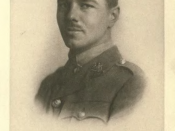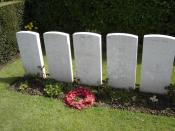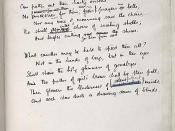Jack Kaye
It was not despair, or terror, it was more terrible than terror. How does Owen present the terrible nature of war?
Wilfred Owen's poetic style is define by his ability to regurgitate and fluently express his memories of war and convey them through his poetry. In his poems Owen attempts to structure his poems to parallel the view on war and thus convey a greater view of the harsh reality that is war. Too, Owen uses imagery of war to convey the physical and mental horrors that face each young boy on the war front. Owen also explores dehumanisation and lack of value in his poems and the treatment of humans as cattle, a waste of life and potential.
Terror is the most powerful emotion of war brought on by the nature and events boys had to endure in wartime. Owen Attempt to use the structure of his poetry parallel the despair and terror boys had to experience.
War was frightening, dirty and scarring for many people, Owen's poem Anthem for Doomed Youth, written in the patrachan sonnet form follows the conventional sonnet rhythm of Iambic pentameter, though like much of Owen's poetry, he attempts to deviate from typical rhythmic pattern and at particular point replace the iamb rhythm with a trochee "Only the Monstrous anger of the guns" Owen Includes this trochee as a way to interrupt the flow of the poem. This trochee reflects the nature of war, one cannot be comfortable with death, and one could not understand war, just as one cannot the flow of Owen's poetry. Owen recreates this idea in a similar way in the poem, Parable of the Old Man and the young as he manipulates an old bible parable to illustrate a moral truth about war. Owen loosely follows...


